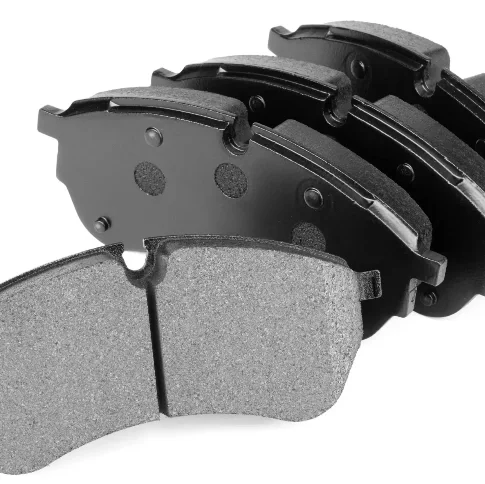Maintaining a vehicle’s braking system is one of the most critical responsibilities for any driver. From the cost of a brake pad replacement to the overall average cost of brake repairs, understanding these expenses helps you plan ahead and ensure your car remains safe on the road. Brake pad and brake plate replacements vary in price depending on vehicle type, parts quality, labor rates, and the complexity of the job. This article breaks down key cost factors, compares typical price ranges, and explains what influences the brake job cost per axle so you can make informed maintenance decisions.
Factors That Influence the Cost to Replace All 4 Brake Pads
One of the most common services is replacing worn brake pads. The cost to replace all 4 brake pads depends on several variables, including parts quality, labor costs, and whether the vehicle requires additional components such as rotors or brake plates.
1. Parts Quality and Material
Brake pads come in several types—organic, semi-metallic, and ceramic. Organic pads generally cost less, while ceramic pads provide durability and low noise but come at a higher price. This choice directly affects the average cost to replace car brakes, as premium materials naturally increase overall expenses.
2. Vehicle Size and Brake System Design
Larger vehicles, luxury cars, and performance cars often require specialized pads that are more expensive. Some models also have more complex systems that increase the average cost of brake repairs due to longer labor time or special equipment.

3. Labor Rates by Location
The cost of a brake pad replacement varies dramatically by region. Urban areas with high shop rates tend to charge more. A shop’s reputation and certification level can also affect pricing.
4. Related Components That May Need Replacement
Brake pad wear often coincides with rotor damage, brake fluid degradation, or brake plate difficulties. When rotors must be resurfaced or replaced, the brake job cost per axle increases considerably. Similarly, the brake plate replacement cost can add to the total bill if the plate is corroded or damaged.
Understanding the Average Cost to Replace Rear Brakes and Axle-Based Pricing
The rear axle brakes frequently cost different amounts compared to the front axle. Knowing the average cost to replace rear brakes and how shops calculate pricing per axle can help you compare quotes more effectively.
1. Why Rear Brake Costs Differ
Rear brakes often use smaller pads or different configurations, such as drum brake shoes instead of calipers. Drum brake systems involve additional steps for disassembly and adjustment, which can influence the brake job cost per axle. This is why the average cost to replace rear brakes may not match front brake expenses.
2. Standard Price Ranges
While numbers vary, here are general expectations:
Cost of a brake pad replacement (front axle): Typically moderate due to straightforward access.
Average cost to replace rear brakes: Can be slightly lower or higher depending on brake type (disc vs. drum).
Cost to replace all 4 brake pads: Usually combines front and rear ranges but increases if rotors, brake plates, or calipers need replacement.
Brake plate replacement cost: Often added to repairs when corrosion or mechanical issues appear.
3. Full Brake System Overhauls
Sometimes the average cost of brake repairs includes replacing more than just pads. Shops may recommend replacing rotors, resurfacing drums, flushing brake fluid, or repairing hydraulic components. These services significantly increase the average cost to replace car brakes, but they ensure long-term safety and reliability.
Conclusion
Understanding the cost of a brake pad replacement, the cost to replace all 4 brake pads, and the overall average cost to replace car brakes empowers you to make well-informed choices about your vehicle’s maintenance. While pricing can vary, knowing the factors that affect the brake job cost per axle—such as labor rates, materials, vehicle type, and additional components—helps you avoid surprise expenses. Brake service is not just about cost; it’s an essential investment in safety. By staying proactive about brake inspections and repairs, you can extend your vehicle’s lifespan and ensure dependable performance on the road.
FAQs
1. What Is the Cost of a Brake Pad Replacement for Most Cars?
The cost of a brake pad replacement typically ranges depending on pad material, vehicle model, and shop labor rates. Ceramic pads and premium systems tend to raise the total cost. Always request a detailed estimate to understand parts and labor breakdowns.
2. What Affects the Cost to Replace All 4 Brake Pads?
The cost to replace all 4 brake pads depends on pad type, whether rotors also need replacement, and the complexity of the brake system. Luxury or large vehicles typically incur higher costs due to specialized components.
3. What Is the Average Cost to Replace Rear Brakes?
The average cost to replace rear brakes varies based on whether the car uses disc brakes or drum systems. Drum brakes may require more labor, while disc brakes often cost more in parts but take less time to service.
4. How Much Is the Brake Plate Replacement Cost?
The brake plate replacement cost depends on the vehicle’s brake system and the extent of corrosion or damage. Replacement is often necessary when rust or wear affects braking stability.
5. What Is the Average Cost of Brake Repairs for a Vehicle?
The average cost of brake repairs can include pad replacement, rotor resurfacing or replacement, fluid changes, and other components. Prices vary widely but increase when multiple parts require simultaneous service.
The brake pads produced by Hengshui Kaiyuan Auto Parts Co., Ltd. achieve superb braking performance with advanced friction material formula, achieve efficient heat dissipation and long-lasting durability through a unique ventilation structure,High quality brake pads create a quiet driving experience with low-noise optimization technology, are compatible with multiple models and ensure stable quality with strict quality control,Brake pad manufacturer and use environmentally friendly materials to implement green concepts, providing a solid guarantee for your safe and comfortable travel in all aspects.